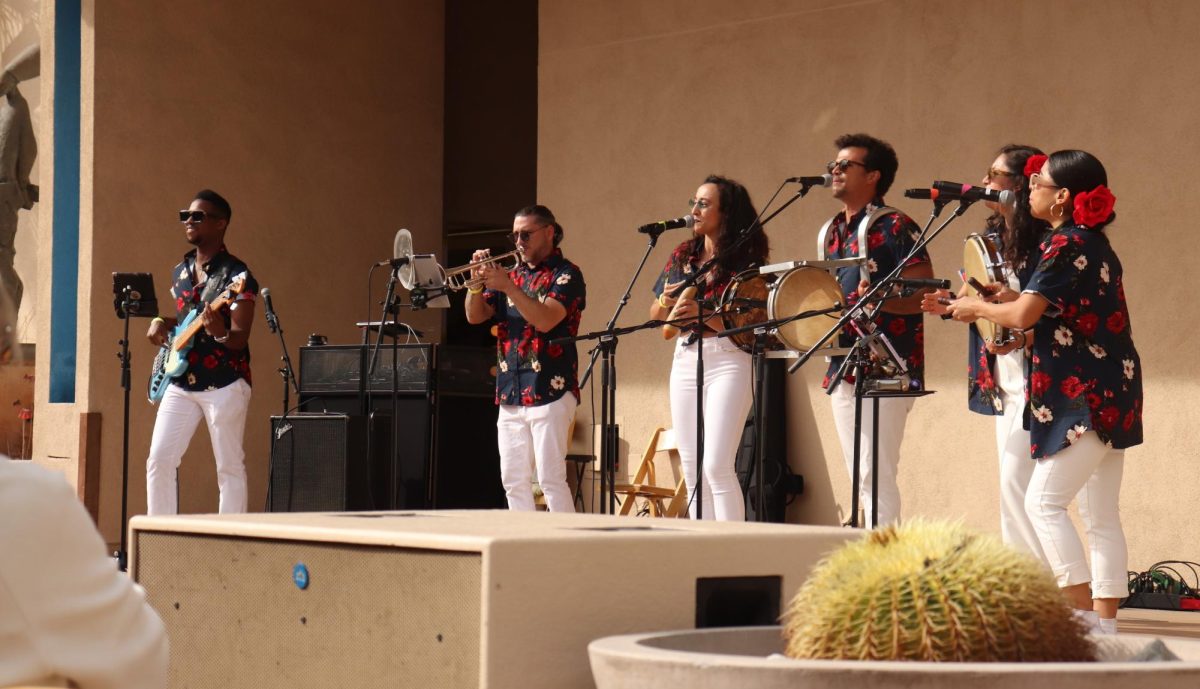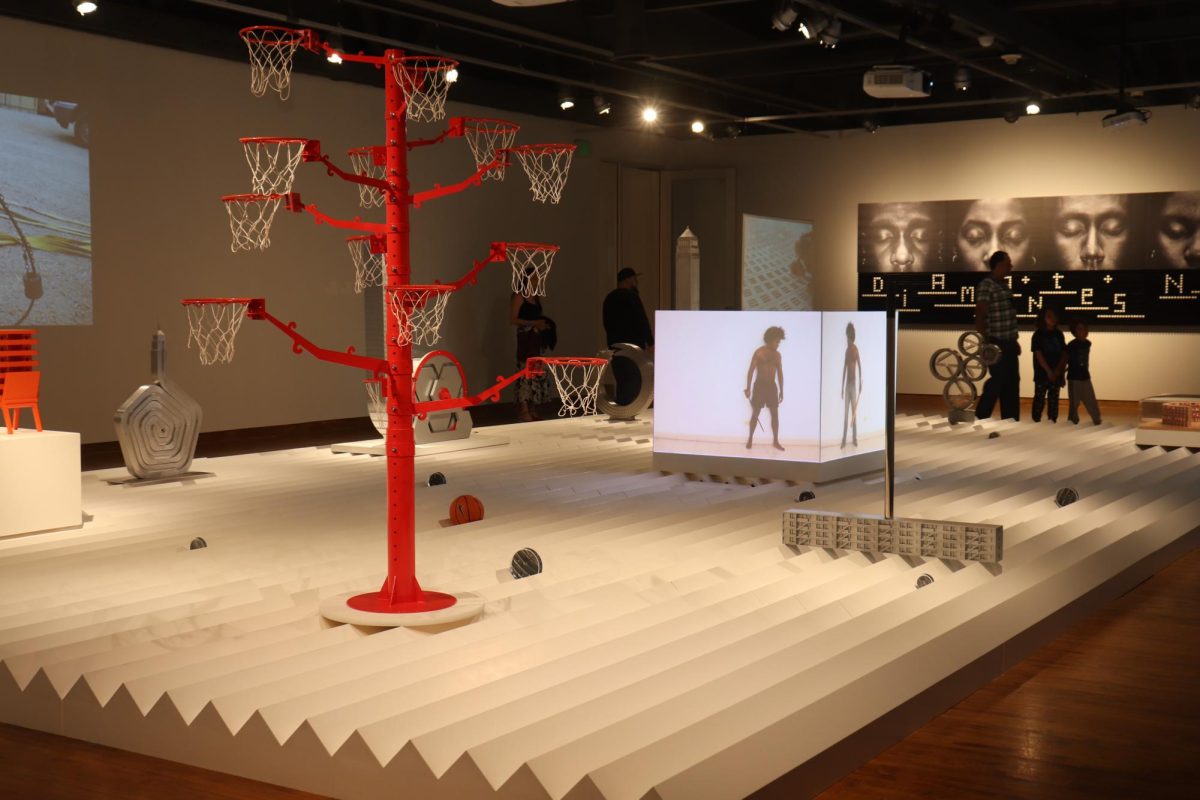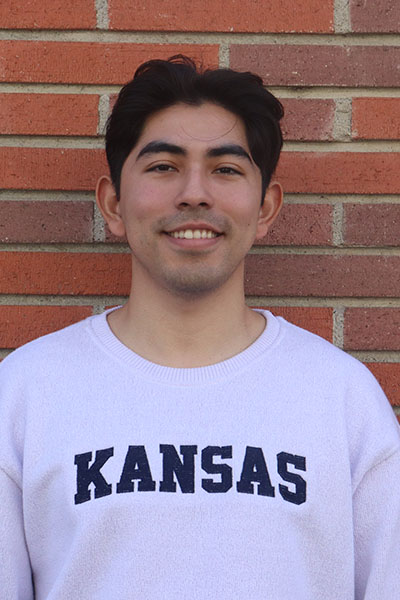Community members gathered at the Museum of Latin American Art in Long Beach for its free annual Afro-Latino family festival on Feb. 25.
DJ iLLMeca provided a sweet symphonic blend throughout the day. Street Dance Orixás kicked off the performances with the Afro-Brazilian dances of Candomble, Lamonte Goode followed with his healing and spiritual CYBERYOGA, Ale Chavarriaga Rey danced a Colombian folkloric and carnivals styles, Plenazo Tribe played an odyssey through Puerto Rico, with Nadia Calmet and the Afro-Peruvian Experience closing the day, weaving lessons of life through song and dance.
Ty Boutte, an attendee, was drawn to the Afro-Latino festival for his love of the culture.
Viewing the performances, he was already familiar with many of the stories, but they were nonetheless joyful to hear.
He was mesmerized, “The strength through adversity created beautiful aspects of culture,” said Boutte.
Metal twisted in coils of barely recognizable New York City architecture or stretched into the branches of a basketball hoop tree lined the gallery halls.
MOLAA’s featured artist, Cuban-born Alexandre Arrechea, also had photo illustrations, sculptures, and video art tackling history, memory, politics, and the power relations of the urban space.
New York-raised Yousef Louis, another attendee, was particularly intrigued by Arrechea’s work.
“It’s interesting to see a Cuban perspective of New York. Growing up Dominican in the 80s, people tried to assimilate, they tried not to learn the language.”
“To have an Afro background was a taboo,” he continued, “The Afro-Latino experience is beautiful and multi-faceted. Being Black in America is one thing, being Latino is one thing, and being Afro-Latino is another, but social media helps teach culture. Today I feel more embraced and understood.”
Just outside the galleries local artists shared their work and their stories.
Olamiposi Somoye is a fashion designer and business owner running her clothing brand, Rayo.
Rayo is inspired by the Yoruba tribe of Nigeria, with prayers being weaved into the clothing. The name itself is Yoruba for Seajoy.
Somoye recognized that fashion is often overlooked as an art form by artists of different disciplines.
“Fast fashion and social media trends cause brands to lose touch chasing consumerism,” she had to say, “People don’t see the value in the art anymore, on top of workers not getting fair wages,” said Somoye.
Rayo ensures its factories pay their employees fairly and use deadstock fabric.
Yoruba tradition keeps Rayo from the stale and uninspired with vibrant colors and eye-catching patterns on clothes designed to follow the changes in women’s bodies throughout the month.
You can find Rayo on Instagram at Rayo.ng or through its website rayobrand.com
Multimedia artist, Judy Perez proudly presented a collection of jewelry and fluid art paintings.
Perez picked up fluid art-abstract art using acrylic paint as a way to grieve after the loss of a dear friend.
Her emotions guide her across the canvas. Colors, shapes, and layers speak for Perez. “It’s more liberating that way,” she noted.
As an Afro-Latina, Perez has found it hard to blend in, “but you have to make a move for yourself, even if no one comes.”
Perez has had three solo exhibits in the past and has set up in the MOLAA before.
You can find her on Instagram at fluidartbyjudy.
Books flew off the shelves at Antonette Franceschi-Chavez’s pop-up shop representing her brick-and-mortar store Casita Bookstore located locally on 4th Street in Long Beach.
Franceschi-Chavez is Mexican and Puerto Rican but grew up isolated from her Puerto Rican roots. Only recently has she been able to explore this side of herself.
For this reason, she believes books are so important, “they expose us to different cultures and to similar backgrounds. We can make connections, feel represented, and learn so much.”
Casita Bookstore is dedicated to promoting diverse stories and voices and frequently hosts author readings.
They can be found on Instagram at casitabookstore or through its website, casitabooks.com
The MOLAA will host Arrechea on Feb. 28 from 6 – 7:30 p.m. for an artist talk with the museum’s chief curator, Gabriela Urtiaga.

















